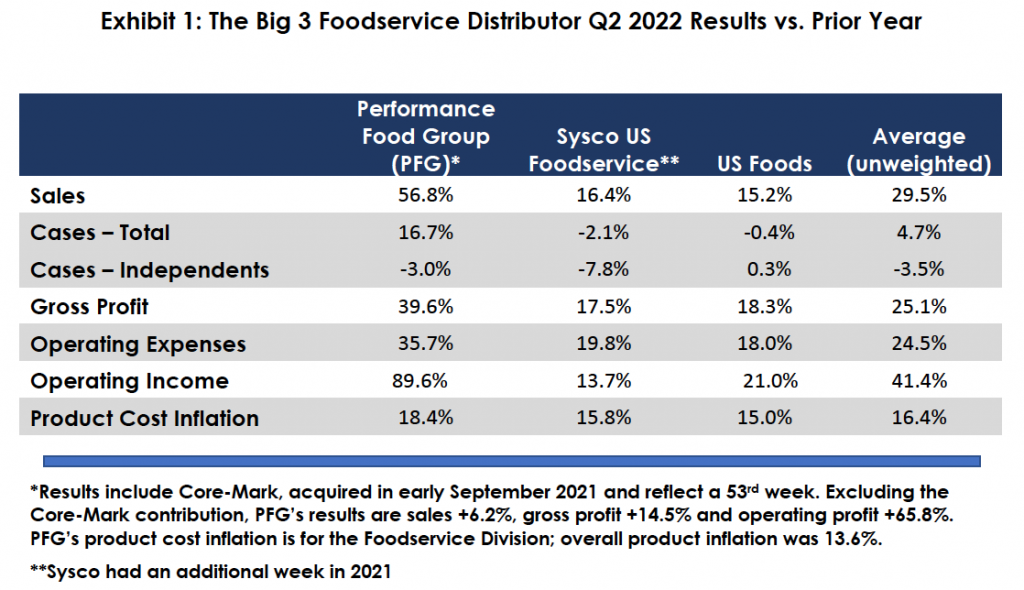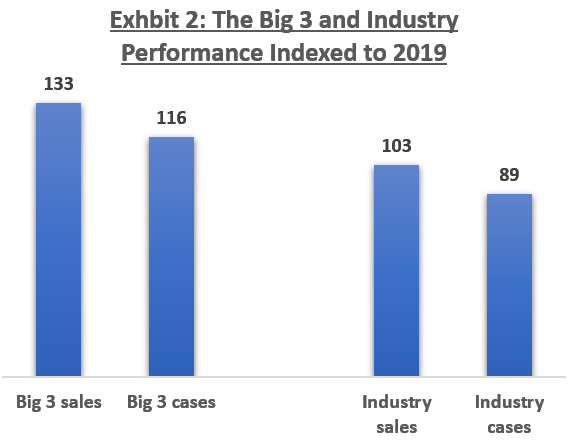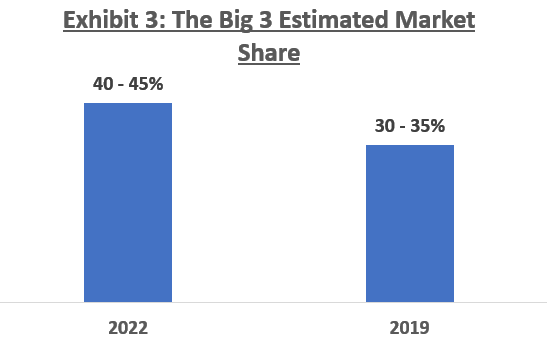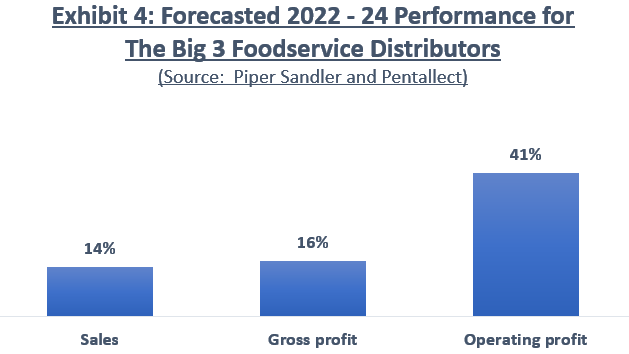
The Big 3 foodservice distributor results for the second quarter of 2022 reflect success in passing along record-high product cost inflation (averaging 16.4%), the impact of recent acquisitions, improvement in the important lodging and B & I segments, increased focus on profit enhancement, strategic investments (including in inventory) and reported market share gains fueled by customer wins and increased account penetration. Average sales for the group were +29.5% for the quarter but are +12.6% if the impact of Performance Food Group’s Coremark acquisition is excluded. This indicates that “real sales” (which are more or less equivalent to case volume) are down. This is not surprising given industry traffic declines and difficult year ago comparisons. Importantly, gross profit per case increased, indicating a favorable product mix and the aforementioned inflation pass-through. Such improvement is unusual because gross margin rates (%) typically suffer when inflation heats up due to fear of customer push-back. Lack of reliable supply has helped distributors – and the Big 3 in particular – to more confidently raise prices and protect their margin rates, which, with average case values of $45 vs. $35 a few years ago, translates to $1.50-$2.50 more gross margin per case. Distributors will need this incremental margin (and more) if labor continues to be scarce and (as shown this quarter) high profitable independent case volumes decline.

Impressively, as shown in Exhibit 2, the Big 3 have significantly outperformed the industry in the studied 2019 – 22 period – Big 3 sales are +33% and cases +16% vs. 3% and -11%, respectively, for the industry1. This has led to consequential market share gains, which we estimate to be around 10 points. Anecdotally, we understand that several regional and large specialty distributors, including Chef’s Warehouse, are also doing similarly “well.”


Going forward, Piper Sandler forecasts sales for the Big 3 will increase by 14% from 2022 – 24 vs. the 11 – 12% Pentallect forecasts the industry will grow. This will lead to further share gains.

Given the huge run-up in product costs and a potential economic downturn, we expect distributor brands to perform well as operators seek value options, especially as consumers begin to “push back” on menu price increases. Furthermore, many distributors have streamlined assortments during COVID, allowing those with greater breadth and depth to pick off individual SKUs that operators prefer. The Big 3 are uniquely positioned to benefit by these trends, to their significant profit advantage. Their financial strength and strategic foresight also enable them to invest in automation, “next generation” tools, such price optimization, and human capital that will likely widen their lead over competition.
Q2 of 2022 marked the second annual lap around the “COVID track.” To their credit, the Big 3 have navigated unimaginably turbid waters by leveraging their scale and acumen, and their collective reward-to-risk ratio is remarkable. Yet, with the industry still lagging 2019 levels, inflation pressuring operators and consumers, and labor scarcer than any time in history, the quarters ahead could be nearly as challenging, results-wise, as the last eight. Pentallect will closely monitor the industry with the intent of informing and enlightening our readers.
1 Product costs increased by 27.5% during the 2019 – 22 period
By: Barry Friends and Bob Goldin
As always, if we can be of assistance, please:
Contact Us